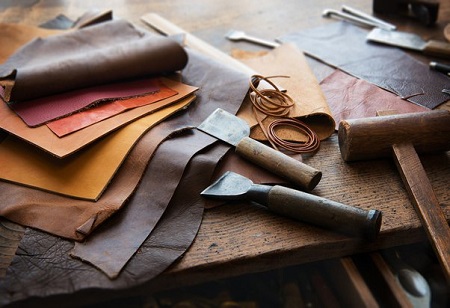
One of the most traded commodities worldwide is leather. A significant portion of the worldwide economy is devoted to the leather and leather products sector, which is thought to generate annual trade revenues of about US$100 billion. The global leather industry is not expected to slow down any time soon, as the trade value of leather globally reaching US$100 billion approximately, and it's no surprise that the increase of leather consumption is in correlation with the increase in world population. However, when dismissing the overall reduction of trade and goods during the Covid era of 2019–2022, and its impact on production in the UAE and globally, we can see that the consumption trend in 2023 is on the rise. The raw material from which a finished leather product is made is consistently available; approximately 90% of the leather comes from cattle used in the food industry, which ensures a steady supply of leather and keeps the price of raw materials from rising as long as cattle are available for food production.
While the greatest shift in the leather market, where there is a strong demand for tanneries to provide a more sustainable method of producing, using, and discarding leather, is from the market side, assuming that all other market factors and geopolitical, socioeconomic stability, and economic recovery remain constant, some of the key trends shaping the leather and allied products industry include:
We now see manufacturers and designers interested in non-traditional sources of leather, such as camel leather, kangaroo leather, and deer leather, to name a few, due to the growing demand for leather products and leather as a raw material.
Similar to this, plant-based leather is becoming more popular. Agricultural waste is being transformed into a form that resembles leather, such as Piatex in the Philippines, which transforms agricultural waste from pineapple into a sustainable product with a low carbon impact.
One such startup in Kerala that makes leather from banana stems, coconut debris, and other natural materials is Malai. Malai's leather breaks down in nature in 150 days. It may have certain uses for products with a short shelf life.
Many people mistake vegan leather for plant-based leather, but the two are slightly different. Vegan leather is any leather made without using any animal products, therefore it can also be made of polyurethane or plastic. Although Vegan Leather is not entirely a sustainable solution because it still doesn't address the issue of recycling it, it does appeal to a large audience as a better alternative when considering the welfare of animals, the poisoning of water through the use of toxic chemicals, and the massive water consumption, all of which are characteristics of traditional genuine Leather hide tan.
Due to its less destructive dying process, which employs twigs and plants to give it its colour, vegetable tanned leather has gained more vocal proponents from new manufacturers. Vegetable tanning does have a drawback, though, and that is the uneven distribution of pigment in the finished product. It has the "Patina" that true leather enthusiasts would love, according to some who claim that this so-called lack of consistency offers it. However, because mass-produced consumer goods must retain a level of uniformity to draw customers, the non-uniform color that changes over time decreases the attraction of these products.
Although the aforementioned is true for businesses that produce goods in large quantities, it is still a smart idea for small leather shops and specialized ateliers to use vegetable tanning for their products because studies show that there is an increasing demand for it.
Technological advances in the field of wireless technologies have enabled leather product manufacturers to integrate wearable technology into their products. Leading fashion designers are partnering with technology firms to produce trendy wearable and luxury products as the market is adopting this concept broadly. For instance, Ralph Lauren introduced the 'Ricky Smart Bag' made from premium leather that enables users to charge their phone by lifting one of the flaps that activates an internal light.
Additionally, the industry is probably going to be significantly impacted by technological advancements. The ability to produce leather goods in entirely new ways may be enabled by new production techniques like 3D printing and biotechnology, potentially lowering the industry's environmental impact and boosting productivity. It might take some time for these technologies to gain widespread adoption because they are still in their early stages.
Numerous factors, such as shifting customer preferences, technical developments, and environmental concerns, are likely to have an impact on the direction of the leather manufacturing business in the future. Consumer desire for greener, more sustainable products will probably be one of the main forces behind transformation in the sector. The market for goods created from substitute materials, like synthetic or plant-based leather, is projected to rise as customers become more conscious of the potential environmental effects of the production of leather. Traditional leather items may no longer be as in demand as they once were, and manufacturers will need to change to stay competitive.
The rising desire for individualized and customized items is another development that is anticipated to have an impact on the direction of the sector. Leather producers will need to be able to offer this level of personalization if they want to stay competitive. Consumers are looking for products that are more distinctive and catered to their own desires.
Overall, a variety of issues, including shifting customer preferences, technical developments, and environmental concerns, are likely to have an impact on the direction of the leather manufacturing business in the future. Manufacturers must be flexible and creative to succeed in an industry that is changing so quickly.
We use cookies to ensure you get the best experience on our website. Read more...